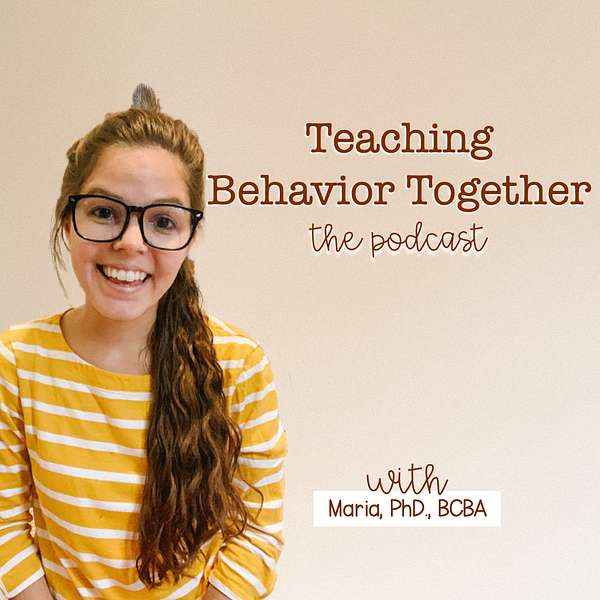
The Teaching Behavior Together Podcast
The Teaching Behavior Together Podcast
Strategies for Teaching Replacement Behaviors in Your Classroom
If you are in the process of determining how to teach a function based replacement behavior you should have conducted a formal FBA, therefore you have identified the function of the behavior or they why behind the behavior.
If you have not done that yet, that would be your first step, you need to know the function of the behavior prior to teaching a function based replacement behavior.
Let’s first break that down. What does a functionally equivalent replacement behavior mean? Basically you are going to be teaching a behavior that results in the same outcome. Therefore, if the function of the behavior is escape, you want to teach the student to engage in a behavior that results in escape, just in a more school appropriate manner. For example, if you have a student who is engaging in a tantrum and it has been identified that the function of the behavior is escape, then we would want to teach the student an appropriate manner to access escape which could be asking for a break or using some sort of break card or something to that effect. The key here, is that the alternative behavior matches the outcome of the behavior of concern.
So how do we go about teaching these behaviors…
When we are deciding on a behavior to teach, we want the new behavior to more effective and more efficient than the previous behavior. In terms of it being more effective, we want to make sure that the behavior results in the outcome as close to every time as possible. Let’s take our example from before, if we are teaching the student to use a break card instead of throwing a tantrum, then whenever the student uses the break card to request a break, it needs to be effective, meaning it results in a break. At the start of our programing our focus is to build the skills and we do that based on reinforcing the appropriate behavior with the outcome that was maintaining the behavior or the function of the behavior. Next we want the new behavior to be efficient, meaning it takes less effort to engage in that behavior than the undesired behavior. This can be where I see a lot of plans run into some bumps. Keep the new behavior as low response effort as possible. We want our student to engage in that behavior over the other behavior because it easier to engage in the appropriate behavior. It is possible to use a very simple response and then shape it into a larger behavior if that is the route the team wants to take. For example, say with our tantrum example, if we are teaching the student to signal to the teacher that they need a break, we might shape that into them asking for a break and expressing why they need a break such as “can I take a break I am feeling frustrated.”
Behavioral Skills Training
In terms of actually teaching the skill, we often will use the behavior skills training model in which you provide information on the skill, model the skill, allow time for practice, and provide feedback. For our example, you would provide the student information or why behind using the break card to access a break. You would model it for the student. You would allow the student to practice in a small group or one on one and then in the classroom setting as well (this might take some prompting) and provide feedback. The key takeaways here are that the behavior we are teaching results in the function as the original behavior and the new behavior is more effective and efficient. Additionally, we want to focus on systematically teaching a skill to the student related to the replacement behavior.
Resources Discussed in this Episode
Free Behavior Intervention Guide
Follow me on Instagram